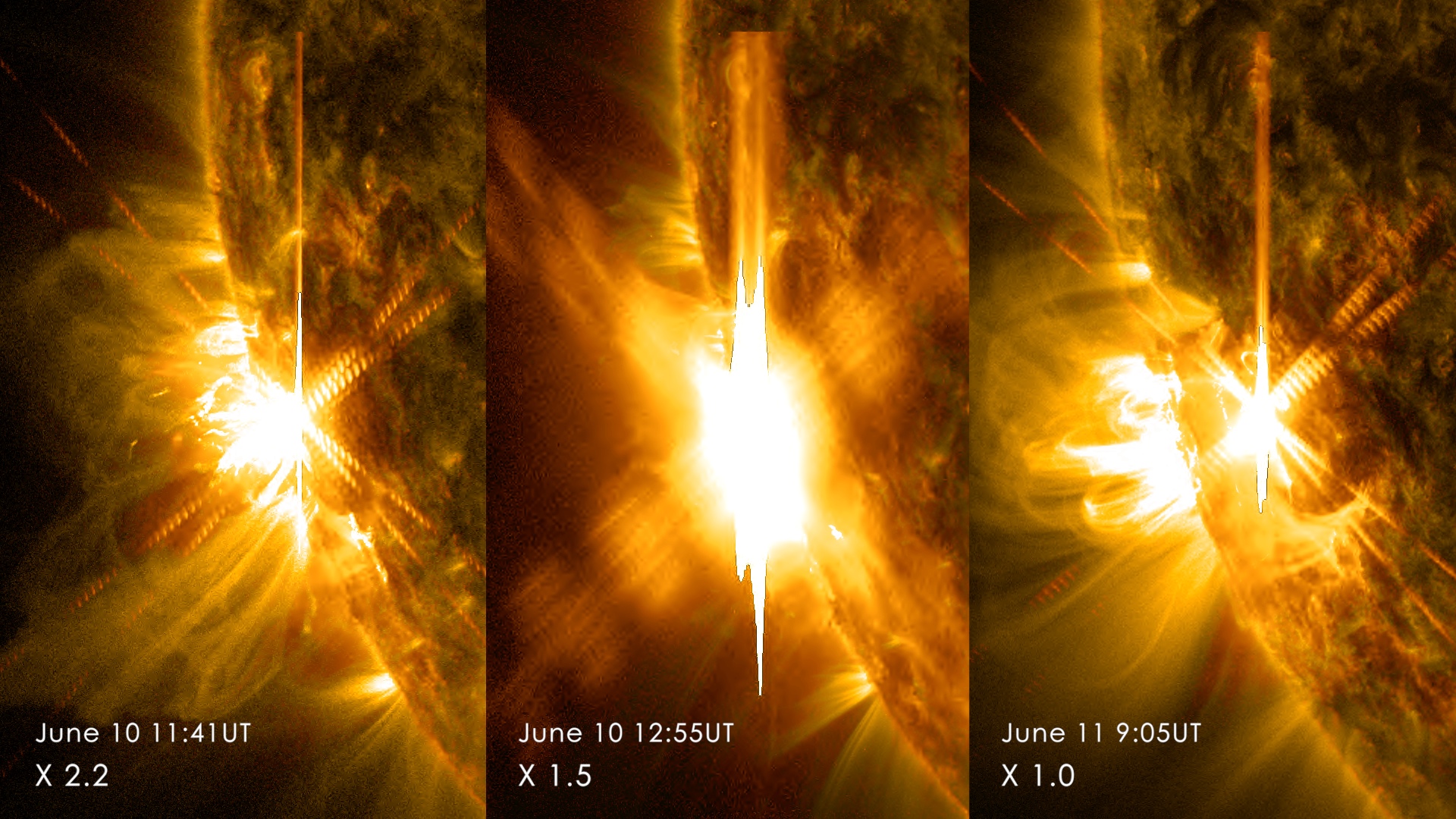

By signing in or creating an account, you agree with Associated Broadcasting Company's Terms & Conditions and Privacy Policy.


By signing in or creating an account, you agree with Associated Broadcasting Company's Terms & Conditions and Privacy Policy.

In the middle of the 19th century, the German Astronomer Samuel Heinrich Schwabe who was tracking sunspots over long periods of time, discovered a 11-year solar cycle, that now bears his name. Based on historical records of sunspots, Schwabe reconstructed solar cycles back to 1755, which marks the start of Solar Cycle 1. The Sun is currently in the peak of Solar Cycle 25, which began in October 2024, and can last as long as two years. The number of sunspots on the visible face of the Sun reaches its maximum extent for that cycle during the peaks. Solar activity can remain elevated for years after the peak.
Solar Cycle 25 began in 2019, and is expected to continue till around 2030. During the peaks, there are more solar outbursts, which can take many forms. The ones that typically make the news are Solar Flares and Geomagnetic Storms. Solar flares are energetic outbursts from Sunspots that are measured in the intensity of their X-rays. These sunspots are measured on a scale that goes through the letters A, B, C, M and X, appended by a finer-grained scale that goes from the numbers 1 to 9. X-class flares are the strongest solar flares, and do not have an upper limit to the appended number, and are most likely to get reported.
The Sun is essentially a ball of hot gas or plasma. Solar flares can be accompanied by coronal mass ejections (CMEs), where plasma from the outer atmosphere of the Sun is violently hurled outwards into space. The snapping of coronal loops or arcades, as well as filament eruptions can result in CMEs as well. Both of these events involve cool, dense strands of plasma suspended in the atmosphere of the Sun being suddenly launched outwards into space. These clouds of charged particles from the Sun carry with them the magnetic field of the Sun, and cause geomagnetic storms on encountering the Earth.

Three back-to-back X-class solar flares between 10 and 11 June, 2014. (Image Credit: NASA SVS).
The initial flare can cause a solar radiation storm that reaches the Earth in eight minutes and 20 seconds. These can cause blackouts of radio communications on the sunlit side of the Earth. Energetic particles at relativistic speeds, or close to the speed of light can reach the planet minutes later, resulting in proton storms, or the rarer electron storms and ion storms. The CMEs, depending on how fast they are travelling, can merge and interact in interplanetary space, reaching the Earth days later, causing geomagnetic storms that include spectacular displays of polar lights. High speed streams emanating from Coronal Holes, if directed at the Earth can also cause geomagnetic disturbances. All of these events are together known as Sun Storms or Solar Storms.
Right now, the Sun is at the peak of Solar Cycle 25. The peaks of the two previous Solar Cycles were roughly in 2014, 2002 and 1992. All of these solar cycles had twin peaks, as in two periods of intense solar activity with a lull in between. The sunspots, and associated solar flares and CMEs all increase in frequency during the peaks of the Solar Cycles. The coronal holes with their high speed streams however, become more common during the solar minimums. There is some evidence to indicate that a particular solar cycle influences the next. The previous peak was not very strong, suggesting that Solar Cycle 25 will have a more intense peak.
Solar Cycles do not last exactly 11 years long, and can vary between nine and 14 years. The 11-year Schwabe cycle is just one of the many solar cycles, that are all named after the scientists that discovered them. During the peak of the solar cycle, the magnetic poles of the Sun switch positions, with a reversal. Over the course of two 11 year solar cycles, the magnetic field returns to its original configuration, during what is known as a Hale cycle that lasts for 22 years. In tree rings and ice cores, there is evidence preserved of centuries and even millennia-long cycles of solar activity. There are also hints of solar storms of proportions not witnessed using sophisticated modern technologies, known as Miyake Events. The last of these occurred over 1,000 years ago, and are called solar superstorms.








